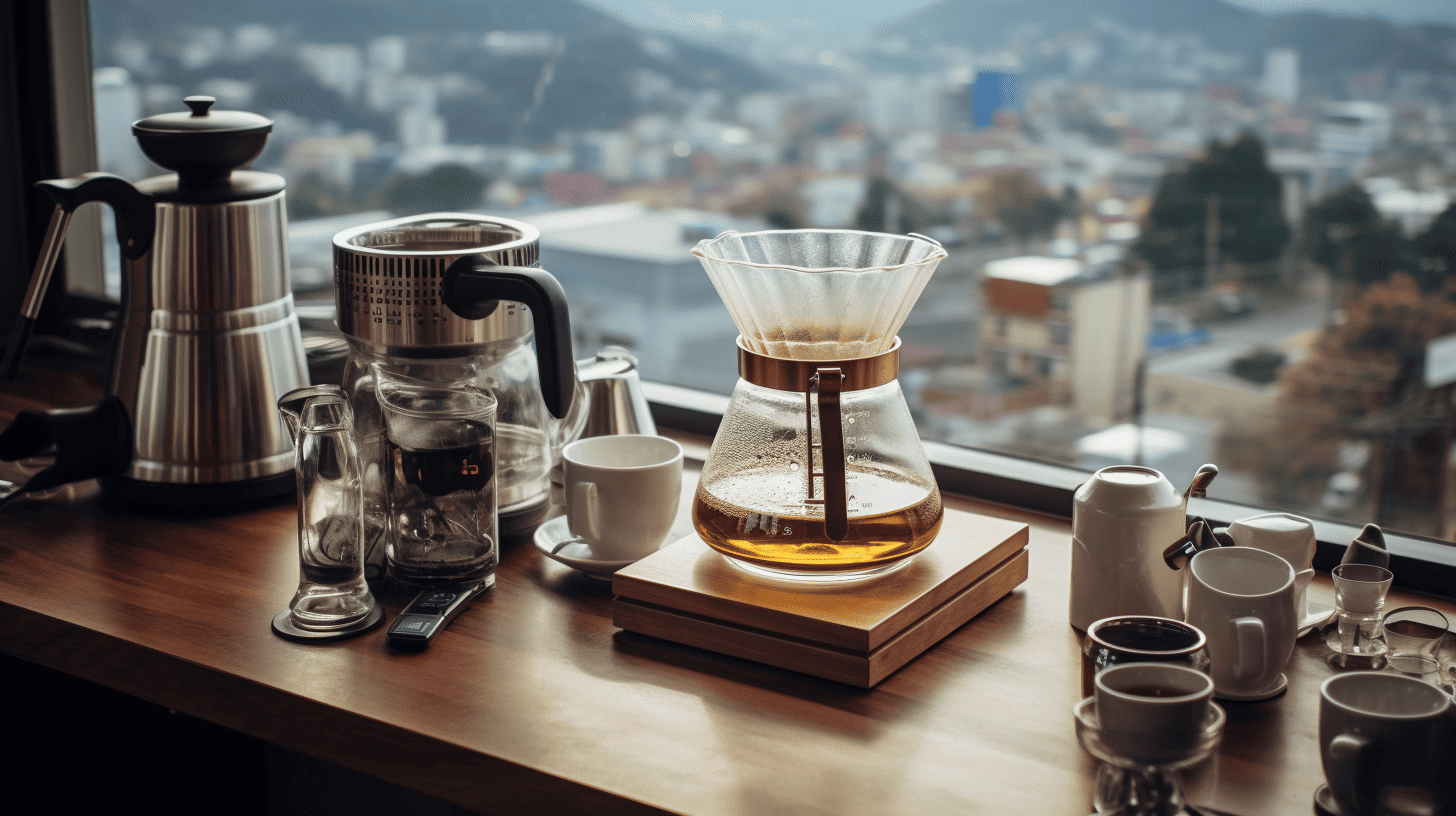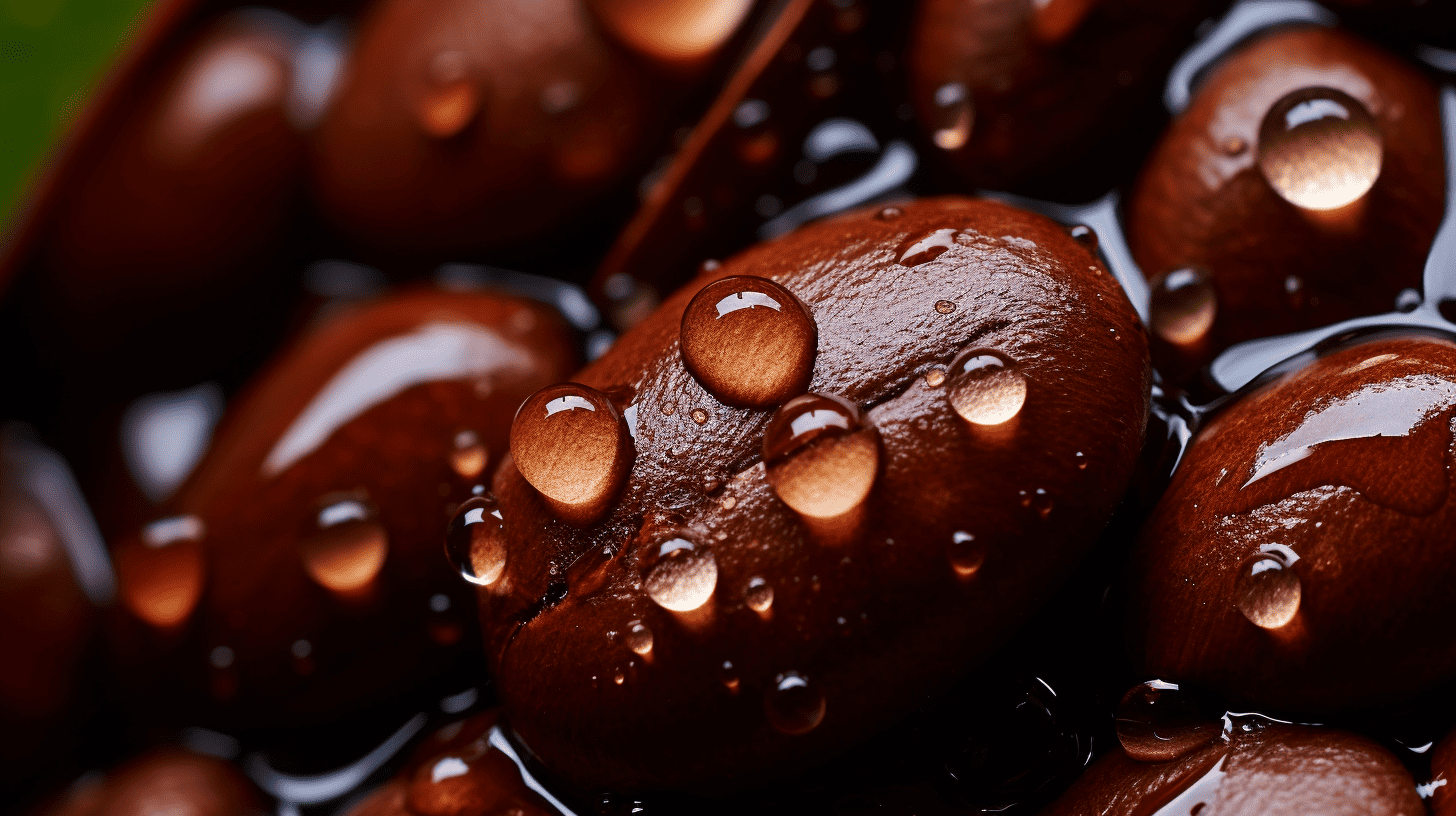Ever wondered what type of mixture your favorite cup of coffee is? Is coffee homogeneous or heterogeneous? If you’re like me, your curiosity has led to an in-depth investigate into whether our beloved morning brew falls under the category of a homogeneous or heterogeneous solution.
Yes, it’s not just another caffeine fix; coffee consists of various solids mixed with water, making the classification quite intriguing. Let’s embark on this fascinating exploration together and uncover what really goes into every cup!
Key Takeaways
- Coffee is a homogeneous mixture because all its components, such as water, milk, sugar, and coffee beans, are evenly mixed.
- The brewing process of coffee can affect its homogeneity. Factors like grinding the coffee beans, choosing the brewing method, adding water, steeping time, filtering or separating play a role in determining the final taste and uniformity of the brewed coffee.
- Adding additives to coffee can also impact its homogeneity. Cream or milk creates a non – uniform mixture while properly dissolved sugar and flavor syrups blend well to create a homogeneous solution.
- Experimenting with different ratios and techniques can help achieve your preferred level of uniformity in your cup of joe.
Definition of Homogeneous and Heterogeneous Mixtures
Homogeneous and heterogeneous mixtures are two different kinds of combinations. A homogeneous mixture is an even mix, like black coffee or saltwater. It has the same look all over, whether top or bottom.
No part stands out from the rest.
On the other side, a heterogeneous mixture does not have an even spread of parts. Think about coffee with cream on top or a salad with chunky bits all over it. You can see that some parts are bigger than others and they do not blend in perfectly.
In clear terms, it’s like comparing ink to beach sand; one blends evenly while the other has visible pieces sticking out separately within it.
Composition of Coffee
Coffee is composed of several components, including water, organic compounds, and inorganic compounds.
Water
Water is a crucial component in coffee, as it forms the liquid base of this popular beverage. When we brew coffee, water is used to extract the flavors and compounds from the coffee grounds.
It helps to dissolve various substances like caffeine, acids, sugars, and oils present in the beans. The amount of water used during brewing affects the strength and taste of the resulting cup of coffee.
The uniform mixing of water with other ingredients like milk and sugar contributes to the overall homogeneity of coffee. In a black cup of coffee, it is difficult to differentiate between individual droplets or particles because they are evenly dispersed in water, making it a homogeneous mixture.

Organic Compounds
Organic compounds are an important part of coffee. These compounds contribute to the aroma, flavor, and overall quality of the beverage. Coffee contains a variety of organic compounds such as acids, oils, and carbohydrates.
These compounds are responsible for giving coffee its distinct taste profiles and characteristics. The presence of these organic compounds in coffee adds complexity and depth to the drink, making it a favorite among coffee enthusiasts.
Inorganic Compounds
Coffee also contains various inorganic compounds. These are substances that do not contain carbon and are typically minerals or metals. Some examples of inorganic compounds found in coffee include potassium, magnesium, calcium, phosphorus, and sodium.
These compounds contribute to the overall flavor and aroma of the coffee, as well as its nutritional content. They can also have potential health benefits when consumed in moderation.
Is Coffee Homogeneous or Heterogeneous?
Coffee is a complex mixture with various components, but is it truly homogeneous or heterogeneous? Let’s delve into the discussion and explore the uniformity of coffee composition and properties.
Click here to uncover the truth about your favorite brew.
Discussion on the uniformity of composition and properties
When it comes to the uniformity of composition and properties, coffee is considered a homogeneous mixture. This means that all parts of the coffee, including water, milk, sugar, and coffee beans, are evenly mixed and have the same properties throughout.
The water acts as the solvent while the other substances act as solutes. They blend together completely to create a beverage that is consistent in its composition. Just like saltwater or ink, which are also homogeneous mixtures, coffee has a uniform distribution of its components.
So when you take a sip of your favorite cup of joe, you can be sure that it is a well-blended and even mixture!
Factors Affecting Homogeneity of Coffee
The brewing process and the addition of various additives can affect the homogeneity of coffee.
Brewing process
Let’s talk about how coffee is brewed. Here are the steps:
- Grinding the coffee beans: The beans are ground into smaller particles to increase the surface area and extract flavor during brewing.
- Choosing the brewing method: There are different ways to brew coffee, such as drip brewing, French press, or espresso. Each method has its unique characteristics and affects the final taste of the coffee.
- Adding water: Hot water is poured over the ground coffee to start the extraction process. The temperature and quality of water play a role in determining the flavor profile of the brewed coffee.
- Allowing steeping time: The coffee grounds and water need time to interact and extract flavors. This can range from a few seconds to several minutes, depending on the brewing method being used.
- Filtering or separating: Once the steeping is complete, a filter or other method is used to separate the brewed coffee from the grounds or other solids present in it.
- Serving and enjoying: The brewed coffee is now ready to be poured into a cup or mug and enjoyed! Add any desired additives like milk, sugar, or flavors according to personal preference.
Mixing additives
When we mix additives with coffee, it can affect its homogeneity. Some common additives include cream, milk, sugar, and flavor syrups. Here are some factors to consider when mixing additives with coffee:
- Cream or Milk: Adding cream or milk to coffee creates a heterogeneous mixture. The fats in the cream or milk do not completely blend with the coffee, resulting in a non-uniform mixture.
- Sugar: When sugar is added to coffee and blended completely, it dissolves and forms a homogeneous solution. However, if the sugar is not fully dissolved or clumps together, it can create a heterogeneous mixture.
- Flavor Syrups: Flavor syrups can be added to coffee to enhance its taste. These syrups are typically made up of sugars and artificial flavors. When mixed properly, they can create a homogeneous solution with the coffee.
- Stirring or Mixing: Properly stirring or mixing the additives with the coffee helps in achieving homogeneity. It ensures that all components are evenly distributed throughout the beverage.
Conclusion on Is Coffee Homogeneous Or Heterogeneous
In conclusion, coffee can be classified as a homogeneous mixture. All the components, including water, milk, sugar, and coffee beans, are evenly mixed to create a uniform beverage.
Despite variations in taste and strength, coffee maintains its homogeneous nature due to its consistent composition and properties.
FAQs on Is Coffee Homogeneous Or Heterogeneous
1. Is coffee a homogeneous or heterogeneous mixture?
Coffee is considered a homogeneous mixture because its components, such as water, dissolved solutes, and coffee particles, are evenly distributed throughout.
2. What makes coffee a homogeneous mixture?
The uniform distribution of the different components in coffee, including the solutes and suspended particles, make it a homogeneous mixture.
3. Can you see different parts or layers in a cup of coffee?
No, you can’t see different parts or layers in a cup of coffee because it is mixed thoroughly and appears to be one consistent liquid without visible separation.
4. Are there any variations in taste within a cup of coffee due to its homogeneity?
Yes, even though coffee is homogenous in terms of its physical appearance and distribution of components, variations in taste can still occur due to factors like brewing methods or types of beans used.





Leave a Reply